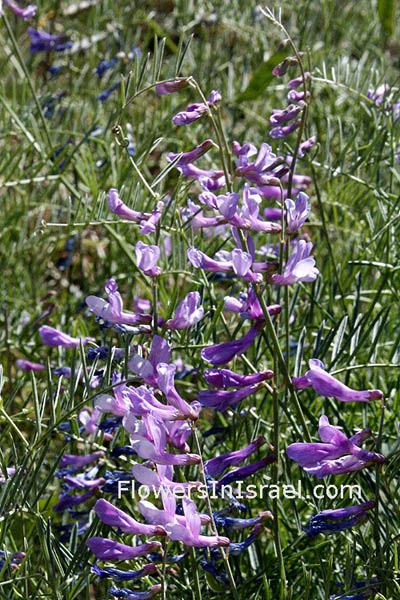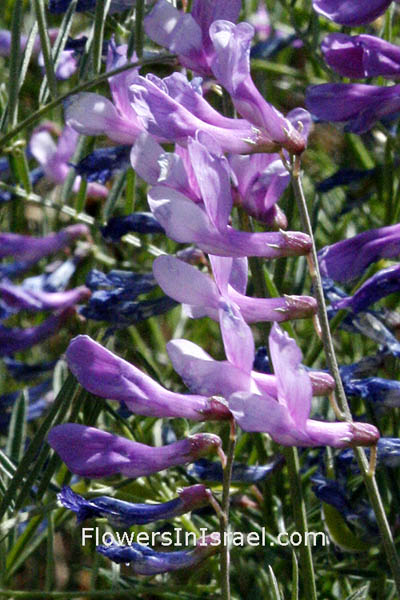Vicia cracca var. tenuifolia, Fine-leaved Vetch,
Hebrew: בקיה דקת-עלים, Arabic: البيقية رقيقة الأوراق
| Scientific name: | Vicia tenuifolia Roth | |
| Synonym name: | Ervum tenuifolium (Roth) Trautvetter, Vicia brachytropis Karelin & Kirilov, Vicia cracca Linnaeus subsp. tenuifolia (Roth) Gaudin, Vicia cracca var. tenuifolia (Roth) Beck. | |
| Common name: | Fine-leaved Vetch | |
| Hebrew name: | בקיה דקת-עלים | |
| Arabic name: | البيقية رقيقة الأوراق | |
| Family: | Papillionaceae, פרפרניים |

|
| Life form: | Hemicryptophyte, climber | |
| Stems: | Up to 100 cm tall; erect, strong, puberulent | |
| Leaves: | Alternate, compound, linear or linear-lanceolate, entire margin; tendril 2- or 3-branched | |
| Flowers: | Pink or violet raceme; corolla 12–18 mm, limb of standard longer than claw | |
| Fruits / pods: | Legume oblong-lanceolate | |
| Flowering Period: | April, May, June | |
| Habitat: | Batha, Phrygana | |
| Distribution: | The Mediterranean Woodlands and Shrublands, Montane vegetation of Mt. Hermon | |
| Chorotype: | Euro-Siberian - Med - Irano-Turanian | |
| Summer shedding: | Perennating |

Derivation of the botanical name: Vicia, vetch; the classical Latin name for these herbs, perhaps related to vincire to bind. tenuifolia, tenuis, thin, fine, slim, slender; folia, leaf; slender leaved. vetch, late 14c., from Old North French, veche, variant of Old French vece, from Latin vicia. The Hebrew name: בקיה, bakia, Post Biblical Hebrew: vetch; Greek: bikion, from Arabic: بيقية (bikia) or باقية (bakya).
|